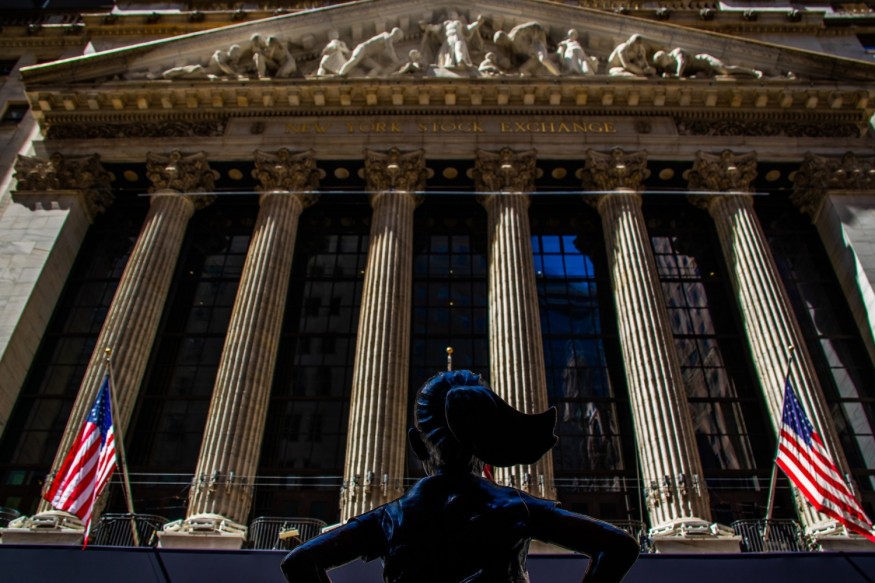Rising Bond Yields and Their Impact on the Financial Landscape - A Comprehensive Analysis

Market Shift: 30-Year US Treasury Bond Yields Hit 5% for First Time Since 2007
Not too long ago, households, businesses, and governments enjoyed a world of easily accessible funds. The US Federal Reserve maintained its benchmark interest rate at zero, while European and Asian central banks even ventured into negative rates to stimulate economic recovery following the financial crisis and during the pandemic.
Key Points;
Recent surge in 30-year US Treasury bond yields above 5% signals a major shift in financial markets.
The era of near-zero interest rates is coming to an end, impacting households, businesses, and governments.
The global debt landscape has reached a record $307 trillion in the first half of 2023.
Central banks, led by the Fed, are focused on managing inflation, but their approach carries risks.
Market experts suggest that investors must adapt to this new reality in the bond market.
However, those days seem to be behind now, and a wave of disruptions is sweeping through various sectors, from real estate to mergers and acquisitions. This upheaval gained momentum when 30-year US Treasury bond yields recently exceeded 5% for the first time since 2007.
Jim Reid, a strategist at Deutsche Bank AG, expressed his concerns, saying, "I struggle to see how the recent yield moves don't increase the risk of an accident somewhere in the financial system given the relatively abrupt end over recent quarters of a near decade and a half where the authorities did everything they could to control yields. So, risky times."
A Shift in Benchmark Bonds Toward Higher Yields
Understanding the significance of Treasuries helps comprehend why the bond market's developments are crucial to the real world. Invest in bonds serves as the baseline risk-free rate against which all other investments are evaluated. As Treasury yields rise, the impact reverberates across broader markets, influencing everything from car loans and overdrafts to public borrowing and the costs associated with corporate takeovers.
The global debt landscape is substantial, with a record $307 trillion outstanding in the first half of 2023, according to the Institute of International Finance.
Several factors contribute to this dramatic shift in the bond market, but three stand out:
1. Resilient Economies: Economies, particularly the US, have demonstrated greater resilience than initially anticipated. Combined with previous monetary easing, this resilience has fueled inflation, prompting central banks to raise rates more aggressively than expected. Furthermore, policymakers are signaling their intent to maintain these elevated rates for an extended period, diminishing the likelihood of a quick policy reversal.
2. Pandemic Debt Surge: Governments worldwide issued significant amounts of debt during the pandemic to safeguard their economies. Now, they must refinance this debt at higher costs, raising concerns about unsustainable fiscal deficits. Political instability and credit rating downgrades add to these challenges.
3. Fiscal Responsibility: As governments strive for fiscal responsibility, the burden inevitably falls on households. They are likely to face higher taxes and strained public services as a result.
Implications for the Stock Market
US Treasuries have long been considered among the safest investments globally. In the past decade, their yields remained subdued, offering modest returns. However, as yields approach the 5% threshold, these bonds are gaining appeal compared to riskier assets like stocks.
One closely monitored metric is the equity risk premium, which measures the difference between the earnings yield of the S&P 500 index and the 10-year Treasury yield. It serves as an indicator of the attractiveness of stocks relative to other investments. Currently, it stands near zero, the lowest in over two decades, suggesting that stock investors are not being adequately rewarded for taking on additional risk.
Central Banks Hold Firm
Despite market turbulence, central banks remain resolute and are not signaling readiness to intervene aggressively.
Fed Chair Jerome Powell and his global counterparts are committed to maintaining a sustainable economic pace to combat soaring inflation. While there is a risk of an excessively sharp economic slowdown, central bankers appear steadfast in their current stance.
Conclusion
In conclusion, the bond market's recent surge in yields above 5% signifies a fundamental shift in the global financial landscape. This transformation carries implications for various sectors and investors, particularly in the stock market, where risk assessments are evolving. While central banks remain cautious, market participants must adapt to this new reality and its potential consequences.
Subscribe to Latin Post!
Sign up for our free newsletter for the Latest coverage!

















